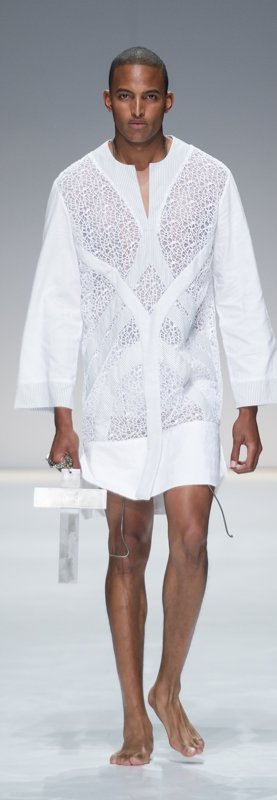The South African Fashion Week, a creative environment where the strength of diversity, inclusivity and equity is celebrated.
From the outset of the SAFW in 1997, the aim was always to embrace and promote a policy of diversity and inclusion – not in words but in practice. These are sentiments that are only now being applied in other countries as noted by Fashion United - 13 September 2022 ‘This season, diversity and inclusion were all the rage on the runways, with designers and organizations fostering space for racial minorities, various body types, and looking beyond the able-bodied.’
For the past 26 years, SAFW has fostered an inclusive environment where all participants of diverse backgrounds, designers, models, make-up artists, hairdressers, working students and temporary helpers and staff, were celebrated. Previously disadvantaged designers appeared as new and individual figures within the creative design landscape and every season brought in new emerging talents (see bar chart below). We are proud of our commitment to diversity, equality, inclusion, and anti-racism. We are further diversifying this coming season by including physically challenged models and team members.
A few notable firsts at SAFW are illustrated by the following:
David West’s “Every day” Collection in 2002 – 2003 featuring full figured models.
David West “Every Day” Collection in 2002-2003
David West “Every Day” Collection in 2002-2003
Black Coffee’s, 2005 – 2006 “Develops with Time” Collection as well as the Superella, 2008 “Young at Heart” Collection, were showed on more mature men and women.
Black Coffee “Develops with Time” Collection in 2005-2006
Superella “Young at Heart” Collection 2008
In 2004-2005 Amanda Laird Cherry showed a full ankle length skirt on a male model in her “Origami Walks the Nhlangakazi Mountain” Collection.
Amanda Laird Cherry “Origami Walks the Nhlangakazi Mountain” Collection 2004-2005
In 2007 Strange Love’s “Revision” Collection showed a full ankle length skirt.
Strange Love “Revision” Collection in 2007
In 2010 Clive Rundle was the first designer to show his “Braille” Collection using a model with albinism. This was followed by Gert Johan Coetzee celebrating our diversity by showing his Blush Cathedral wedding gown on another model with albinism for SS17.
Gert Johan Coetzee “Blush Cathedral” Collection in SS17
The same year Black Coffee showed the first non-binary Collection called “The Five”.
Black Coffee “The Five” Collection SS17
These opened the door for other designers to think laterally in terms of gender fluidity, identity and body shape – thus making way for the constructive discussion and evaluation of gender and identity based issues.
2018, 2019, and 2020 Designers De Mill, Klipa, Ntando XV showed strong gender fluid Collections.
De Mill Collection SS18
Klipa Collection AW19
Ntando XV Collection AW20
Jacques Bam’s Collections featured transgender models demonstrating a clear shift into an uncompromised future of fashion.
The Bam Collective AW20, SS22, SS23 & AW23
In South Africa we have to count our strengths within our diversity so as to a create a collective voice that reflects a shared identity which in turn gives rise to a unique creative impetus, embracing the Fashion Design Industry of our country.
The South African Fashion Week Collections will take place from 19 to 22 October at the Mall of Africa.
Ticket sales opens through Quicket on the 19 September.
It is with gratitude that we acknowledge our financial partners: The MALL OF AFRICA, MR PRICE, CRUZ VODKA, ISUZU AND CARLTON HAIR.



























